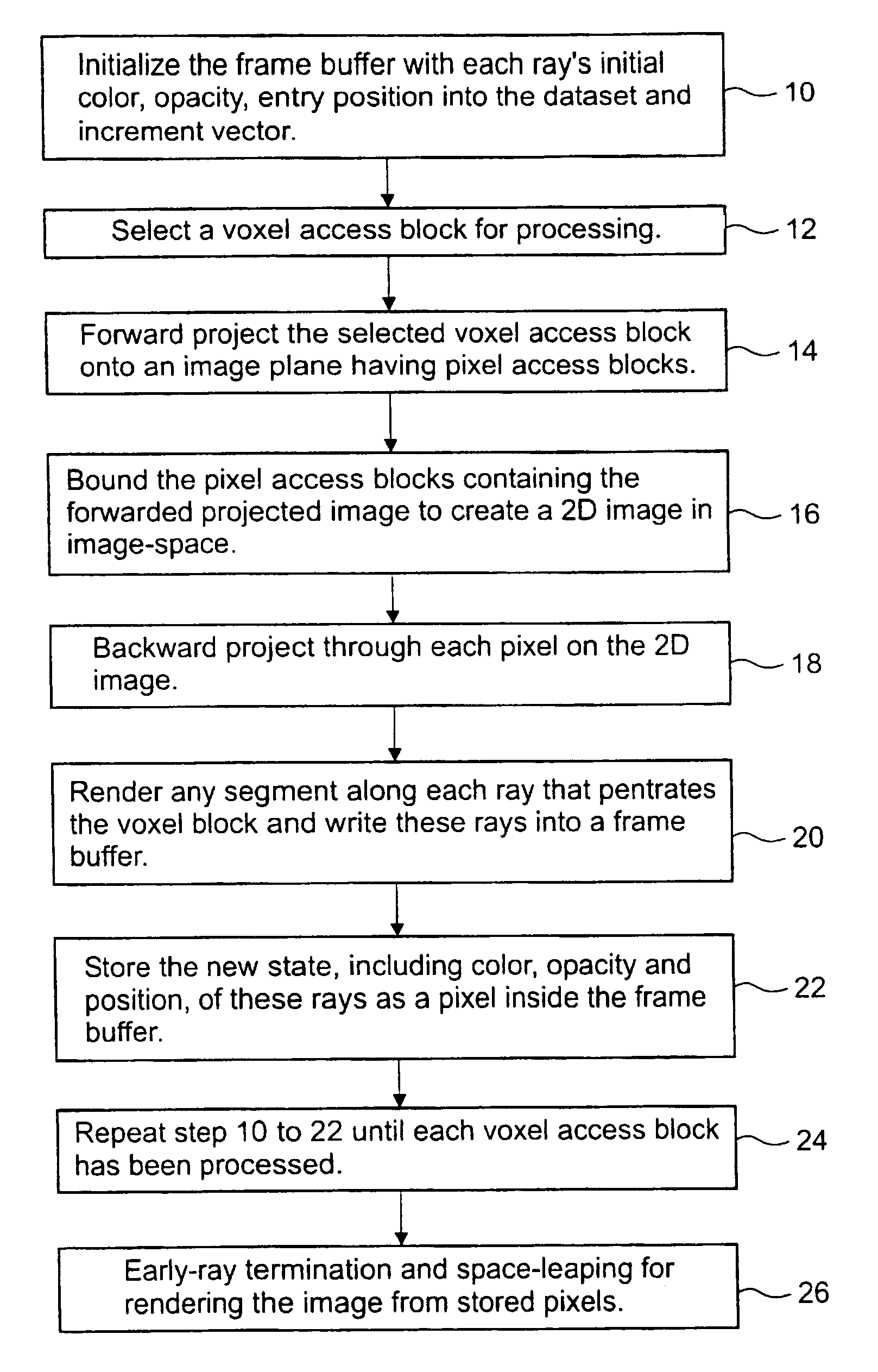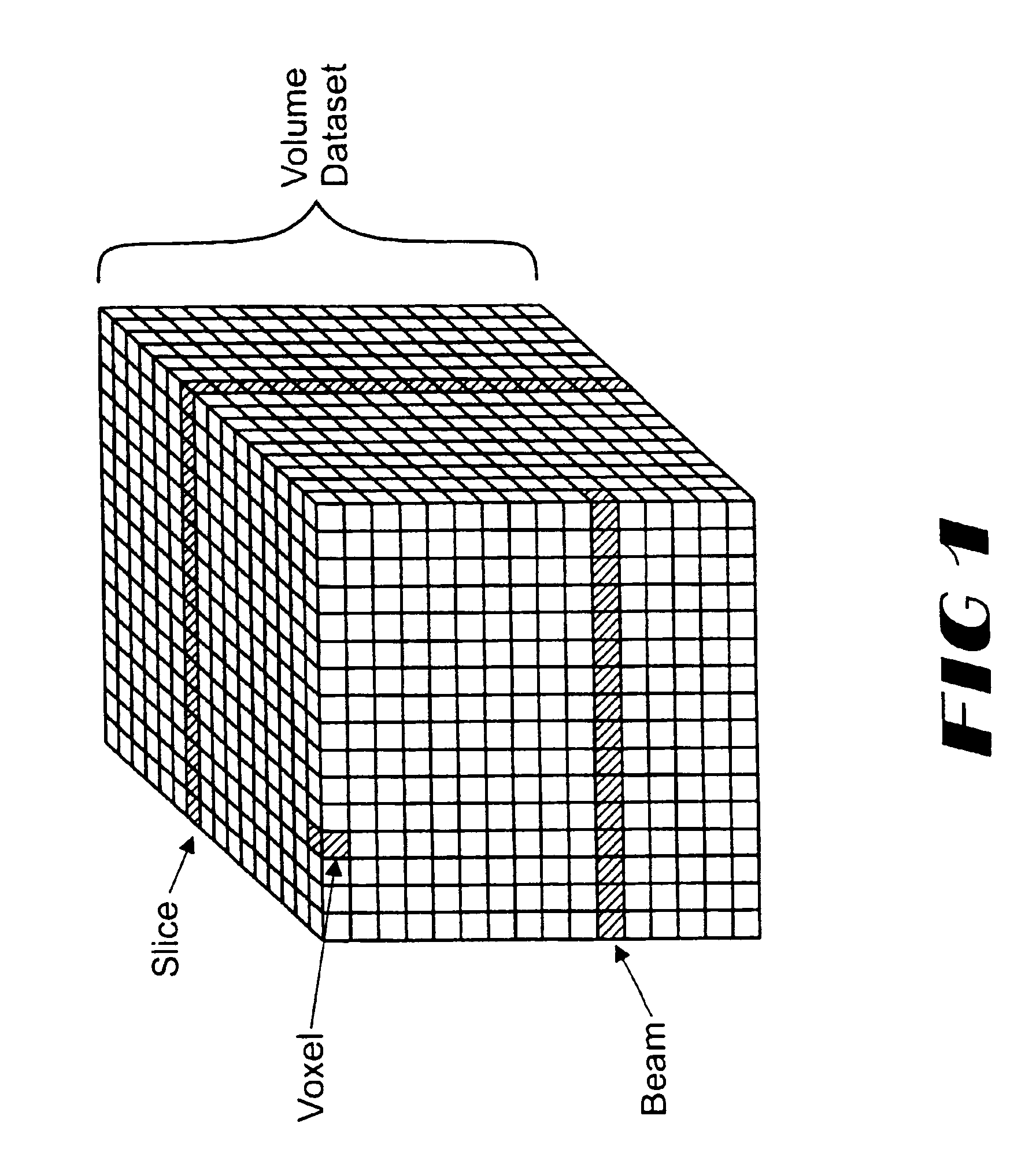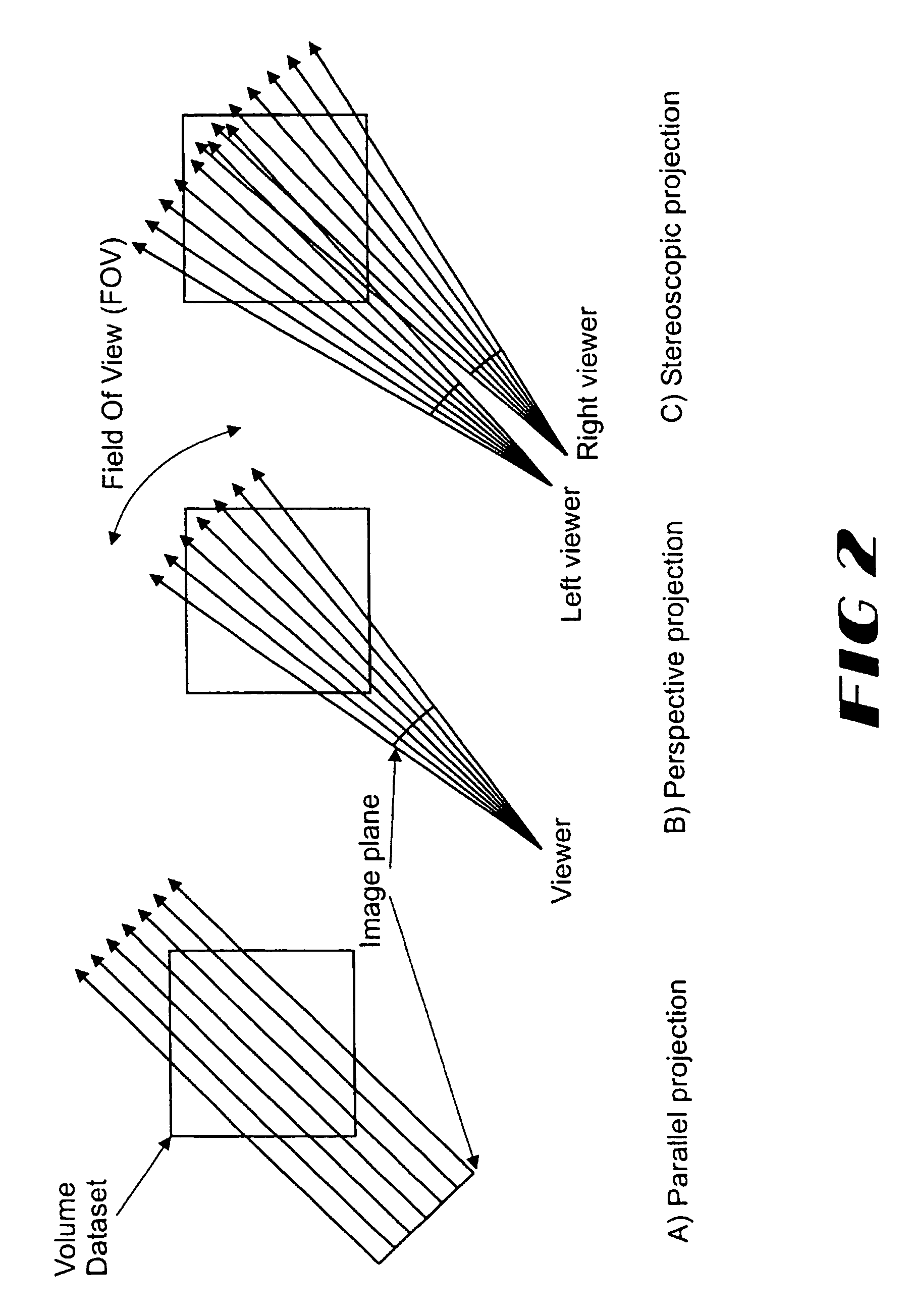Resample and composite engine for real-time volume rendering
a composite engine and volume rendering technology, applied in the field of three-dimensional computer graphics systems, can solve the problems of large amount of storage, large amount of memory bandwidth and computational throughput, and large requirements of interactive volume rendering or real-time volume rendering defined below, so as to accelerate the processing of voxels and reduce the number of voxels needed
- Summary
- Abstract
- Description
- Claims
- Application Information
AI Technical Summary
Benefits of technology
Problems solved by technology
Method used
Image
Examples
example 1
[0092]The resample and composite engine architecture was simulated in software using a C++ clock cycle simulator. The simulator conservatively assumed that the pixel memory bus operated at the same rate as the voxel memory bus and that the entire dataset lies within the view volume. In practice, embedded DRAM technology can be used for the relatively small pixel memory to enhance performance. Voxel-blocks sizes were varied between 64(43)−32768(323) voxels. Pixel-tiles were sized to accommodate 16 pixels per processor. For example, if 4 processors are simulated a pixel-tile containing 64 pixels are used. This allowed the Resample And Composite Engine to hide the memory latency when accessing the pixel-memory.
[0093]Each processor was configured as follows: the Input Queue could store up to 128 rays, the Accept Queue could store up to 16 rays, the Pixel Cache could store 128 rays, and the Output Queue could store up to 128 rays. The auxiliary on-chip storage required less than 10K Byte...
PUM
 Login to View More
Login to View More Abstract
Description
Claims
Application Information
 Login to View More
Login to View More - R&D
- Intellectual Property
- Life Sciences
- Materials
- Tech Scout
- Unparalleled Data Quality
- Higher Quality Content
- 60% Fewer Hallucinations
Browse by: Latest US Patents, China's latest patents, Technical Efficacy Thesaurus, Application Domain, Technology Topic, Popular Technical Reports.
© 2025 PatSnap. All rights reserved.Legal|Privacy policy|Modern Slavery Act Transparency Statement|Sitemap|About US| Contact US: help@patsnap.com



